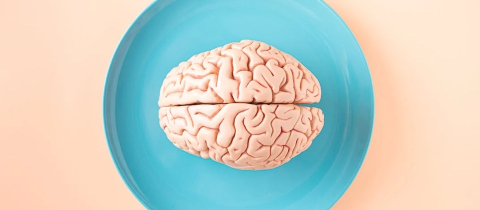I keep teasing my analytical chemist colleagues that they are responsible for the anxiety that so many people have about chemicals invading their lives. Hardly a day goes by without some report of phthalates, perfluoroalkyl substances (PFAS), pesticides, dioxins, bisphenol A, or a host of other mischievous “toxins” being detected in our food and water. That detective work is carried out by analytical chemists who continue to devise better and better means to uncover smaller and smaller amounts of contaminants. Amazingly, these days they can detect substances that are present below the part per trillion level!
To have a feel for what a part per trillion means, imagine dissolving a substance the size of a grain of sand in an Olympic size swimming pool. Then you have a concentration of one part per trillion. If you are keen for another analogy, a part per trillion is the width of a credit card relative to the distance between the Earth and the moon. But let’s keep in mind that the mere presence of a substance, even one that at higher concentrations can be shown to be harmful, cannot be equated with the presence of risk. Determining risk is a whole other, extremely challenging, issue. Risk is a function not only of the toxicity of a substance but also of the extent and means of exposure.
A study reporting the presence of nanoplastics in bottled water, just published in the highly reputable Proceedings of the National Academy of Sciences, caused a big splash in the media. Finding 200,000 particles of plastic in a liter of bottle water was bound to generate headlines. But before panicking we better have a look at the details of the study and what nanoplastics are all about. Well, we can’t really have a look because such particles cannot be seen, not even with an optical microscope. Their detection relies on extremely sophisticated methods such as atomic force microscopy, or in the present case, “hyperspectral stimulated Raman scattering microscopy.” That technique is way beyond my understanding, but it can detect particles in the range of 1-100 nanometers, five thousand times smaller than a grain of sand. That is impressive! Especially given that just five years earlier, a study using the methods then available was only able to detect about 300 particles smaller than 100 nanometers in a liter of bottled water.
Now let’s try to get a handle on what finding these hundreds of thousands of particles in water means. Although the ability to detect nanoplastics is relatively recent, we have known since the 1980s about the presence in natural waters of microplastics, defined as particles smaller than half a millimeter. These have numerous sources. Discarded plastic bottles, cutlery, straws, shopping bags, food containers and condoms end up in water systems and break down into microplastics when exposed to sunlight and the pounding of waves. Every time we do laundry, synthetic fibers shed microplastics, as do tires when they rub against the road. These microplastics eventually find their way into our food, water, and even the air we breathe. The question is what they are doing to us. That question is even more pertinent with nanoplastics because these are small enough to invade not only tissues and organs, but individual cells as has been shown in laboratory studies. In mice, nanoplastics interfere with fetal development and increase the risk of Parkinson’s disease. It stands to reason that any foreign substance that can enter cells is a concern.
There is yet another issue with plastic particles floating around in our bodies. Plastic manufacture relies on the use of additives such as antimicrobials, antistatic agents, flame retardants, pigments, light stabilizers, lubricants and plasticizers. Conceivably, trace amounts of these chemicals can leach into our bloodstream, as can some of the residual chemicals from which plastics are manufactured. Bisphenol A (BPA), acrylic acid and styrene fall into this category. Then there is the potential of plastics to attract to their surface any chemicals with which they may come into contact. Pesticides, drug residues, and dioxins, all of which are water contaminants, can adhere to the surface of plastics and be transported into our bodies. Many of these chemicals are known to be toxic in high doses, and some, phthalates and bisphenol A in particular, are “endocrine disruptors,” meaning that they can interfere with the function of hormones even at very low levels.
While nano and microplastics are a source of exposure to phthalates, they are by no means the major exposure. Phthalates are added to many plastics as “plasticizers” to increase flexibility, a requirement for food packaging, medical tubing, vinyl gloves, floor tiles, shower curtains and many toys. They are also added to scented products where they retard the loss of fragrance. Phthalates are ubiquitous, appearing in almost every beverage and food as well as in virtually everyone’s urine and blood. That has prompted extensive research, particularly pertaining to their hormone-like effects. In rodents, they cause developmental problems and are associated with a shorter ano-genital distance in males, suggestive of a feminizing effect. Although the evidence is far from being iron-clad, studies have associated higher levels of endocrine disruptors in the blood with diabetes, cardiovascular disease, birth defects, obesity, certain cancers and infertility. Their presence in our bodies is not welcome.
Now back to our bottled water. Just where the thousands of nanoplastic particles that are swallowed with each gulp come from is a complex matter. Some of course come from the bottle and the cap, but there are also various nanoplastics that stem from the processing the water undergoes. Water flows through plastic pipes, valves and filter membranes that abrade and release nanoplastics. Tap water also goes through processing, so nanoplastics are found there as well, albeit fewer than in bottled water.
The bottom line is that there is no escape from nanoplastics and the chemicals they contain because they are shed from all the plastics that are engrained in our lives. The pharmaceutical, personal care product, sporting equipment, clothing, food production and electronics industries could not exist without the use of plastics. Neither could airplanes, cars, hospitals, cell phones, or sex toys. I suppose we could do without the latter, but not the rest.
There is no doubt that the benefits of plastics greatly outweigh any associated risks, but those risks are not zero. Are they macro, micro or nanorisks? At this point we have to introduce the difference between hazard and risk. Hazard is the innate property of a substance to do harm and cannot be changed. I think we can assume that the chemicals found in plastics at a high enough dose can do some harm. Risk, however, is a function of hazard, but it also takes extent of exposure into account. So, what is our exposure to nanoplastics by drinking a liter of bottled water?
A particle of nanoplastic weighs somewhere between 10-12 and 10-15 grams, let’s say 10-13 ((0.0000000000001 grams) on average. If we have 300,000 nanoparticles in a liter of water, their total weight would be 3 x 10-8 grams. To put that into perspective, a grain of sand weighs roughly 10-6 grams, so by drinking a liter of bottled water, the weight of plastic consumed would be about one one-hundredth the weight of a grain of sand. Can that be harmful? Almost certainly not. But what if we consume a liter of that water every day? Is it possible that the nanoparticles accumulate in our tissue to an extent that they can cause some sort of harm? We have no data on which to build a theory. In Sherlock Holmes immortal words, “It is a capital mistake to theorize before one has data; insensibly one begins to twist facts to suit theories, instead of theories to suit facts.”
At this point, we just cannot say whether nanoplastics in bottled water pose a risk. My guess is that in comparison with all the other risks we face in life, if there is any, it would be a very minor one. But if the study that hit the headlines with the finding of all those nanoparticles deters some people from buying bottled water, that’s fine with me. The bottles are an environmental disaster. They use up petroleum, a non-renewable resource, pollute natural water systems when they get discarded instead of being recycled, and have no health benefits over filtered tap water.
Indeed, the study by Columbia University researchers can be justly termed “trailblazing” because of the analytical technique they developed to detect such tiny, tiny particles. But as far as toxicity goes, there is no firestorm here. Maybe a few smoldering embers.







